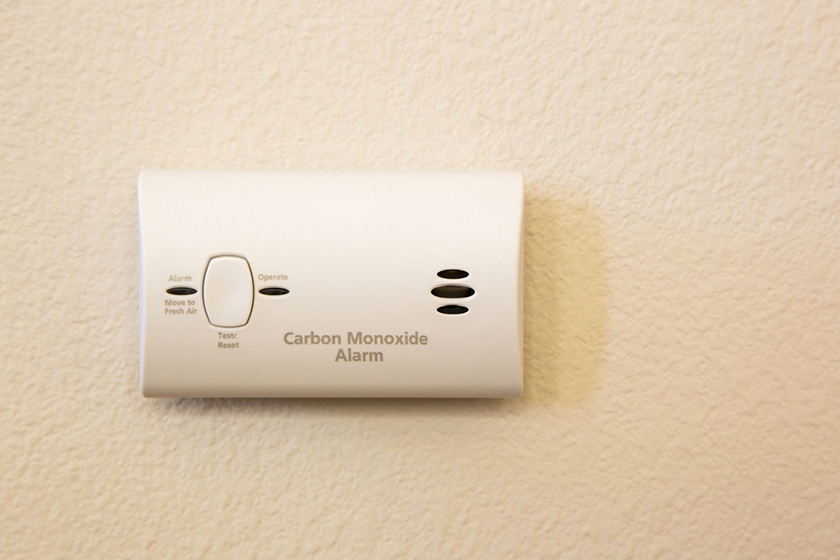Carbon Monoxide Detector Vs. Smoke Detector: What Every Business Owner Should Understand

Ensuring the safety of your business premises is paramount, and understanding the differences between a carbon monoxide detector and a smoke detector is essential. Both devices play critical roles in protecting lives and property, but they detect different hazards and function in distinct ways.
Here’s what every business owner should know to make informed decisions about fire and gas safety in their establishments.
What is a Smoke Detector?
Smoke detectors are devices designed to sense smoke, a key indicator of fire. They are integral to any fire alarm system and serve as the first line of defense in detecting fire hazards.
How Smoke Detectors Work
Smoke detectors typically operate using one of two main technologies: ionization and photoelectric.
- Ionization Smoke Detectors: These are more responsive to flaming fires. They contain a small amount of radioactive material that ionizes the air, creating a current between two plates. When smoke enters the chamber, it disrupts this current, triggering the alarm.
- Photoelectric Smoke Detectors: These are more responsive to smoldering fires. They use a light beam aimed into a sensing chamber at an angle. When smoke enters, it scatters the light, which then hits a sensor and triggers the alarm.
Importance in Business Settings
Smoke detectors are crucial for early fire detection, giving employees and customers the vital time needed to evacuate safely. Regular maintenance and testing are essential to ensure these devices function correctly when needed most.
What is a Carbon Monoxide Detector?
A carbon monoxide detector is designed to detect the presence of carbon monoxide (CO), a colorless, odorless, and tasteless gas that can be lethal at high levels. Unlike smoke detectors, carbon monoxide detectors are specifically used to identify this particular gas, which is often produced by malfunctioning fuel-burning appliances.
How Carbon Monoxide Detectors Work
Carbon monoxide detectors function using several different technologies:
- Electrochemical Sensors: These are the most common and reliable. They contain a chemical solution that reacts with carbon monoxide, generating an electrical current that triggers the alarm.
- Metal Oxide Semiconductors: These sensors use a silica chip to detect CO. When carbon monoxide contacts the chip, it lowers the electrical resistance, setting off the alarm.
- Biomimetic Sensors: These sensors use a gel that changes color when it absorbs carbon monoxide, which triggers the alarm.
Importance in Business Settings
Carbon monoxide is often called the “silent killer” because it is undetectable without a proper detection device. Ensuring your business is equipped with carbon monoxide detectors, especially in areas with fuel-burning appliances, is crucial to protecting the health and safety of employees and customers.
Key Differences Between Smoke Detectors and Carbon Monoxide Detectors
Understanding the key differences between smoke detectors and carbon monoxide detectors is essential for comprehensive safety measures in any business.
Detection Capabilities
- Smoke Detectors: Designed to detect smoke particles, indicating the presence of fire.
- Carbon Monoxide Detectors: Specifically designed to detect carbon monoxide gas.
Placement in Business Premises
- Smoke Detectors: Should be installed on every level of a building, inside bedrooms, and outside sleeping areas. They should also be placed in hallways, stairwells, and rooms with heavy fire loads such as kitchens and storage areas.
- Carbon Monoxide Detectors: Should be installed near sleeping areas and on every level of the building, especially near fuel-burning appliances.
Response Mechanisms
- Smoke Detectors: Trigger an alarm when smoke particles are detected, signaling a potential fire.
- Carbon Monoxide Detectors: Trigger an alarm when carbon monoxide levels rise to dangerous levels, alerting occupants of potential poisoning.
Maintenance and Testing
- Smoke Detectors: Require monthly testing and battery replacement at least once a year, or more frequently for hardwired systems.
- Carbon Monoxide Detectors: Also require regular testing and battery replacement. Some units may have a lifespan of up to 10 years, after which they should be replaced.
Integrated Safety Solutions
To achieve optimal protection, businesses should invest in a robust safety system that incorporates both smoke and carbon monoxide detectors. This comprehensive strategy monitors all potential hazards, providing an enhanced level of safety and peace of mind for all occupants. Regular maintenance and system checks further bolster the effectiveness of these safety measures, ensuring long-term reliability and protection.
The Role of Fire Safety Alarms, Inc.
At Fire Safety Alarms, Inc., we understand the importance of comprehensive safety systems. Our partnership with Edwards System Technologies (EST) allows us to provide top-of-the-line life safety products that integrate seamlessly into your business operations. Our technicians are fully certified and trained to install, maintain, and test both smoke and carbon monoxide detection systems.
Emergency Services
In the event of an emergency, having a reliable detection system is crucial. Our systems are designed to provide immediate alerts, ensuring rapid response times that can save lives and minimize property damage.
Choosing the Right System for Your Business
Selecting the appropriate detection systems for your business involves understanding the specific needs and risks associated with your premises. Factors to consider include:
- The type of business and its associated fire and carbon monoxide risks.
- The size and layout of the building.
- Local building codes and regulations.
Consulting with professionals in fire safety can provide invaluable insights and recommendations tailored to your specific situation.
Compliance with Safety Regulations
Ensuring that your business complies with local, state, and federal safety regulations is not only a legal requirement but also a critical aspect of protecting your business. Smoke and carbon monoxide detectors play a significant role in meeting these regulations.
Protecting your business from fire and carbon monoxide hazards requires a thorough understanding of the roles and functionalities of both smoke and carbon monoxide detectors. By ensuring your premises are equipped with the right detection systems, you safeguard the health and safety of everyone on-site.
At Fire Safety Alarms, Inc., we are dedicated to providing top-quality fire and gas detection systems tailored to your business needs.
Contact us today to learn more about our services and how we can help you enhance your safety measures.
